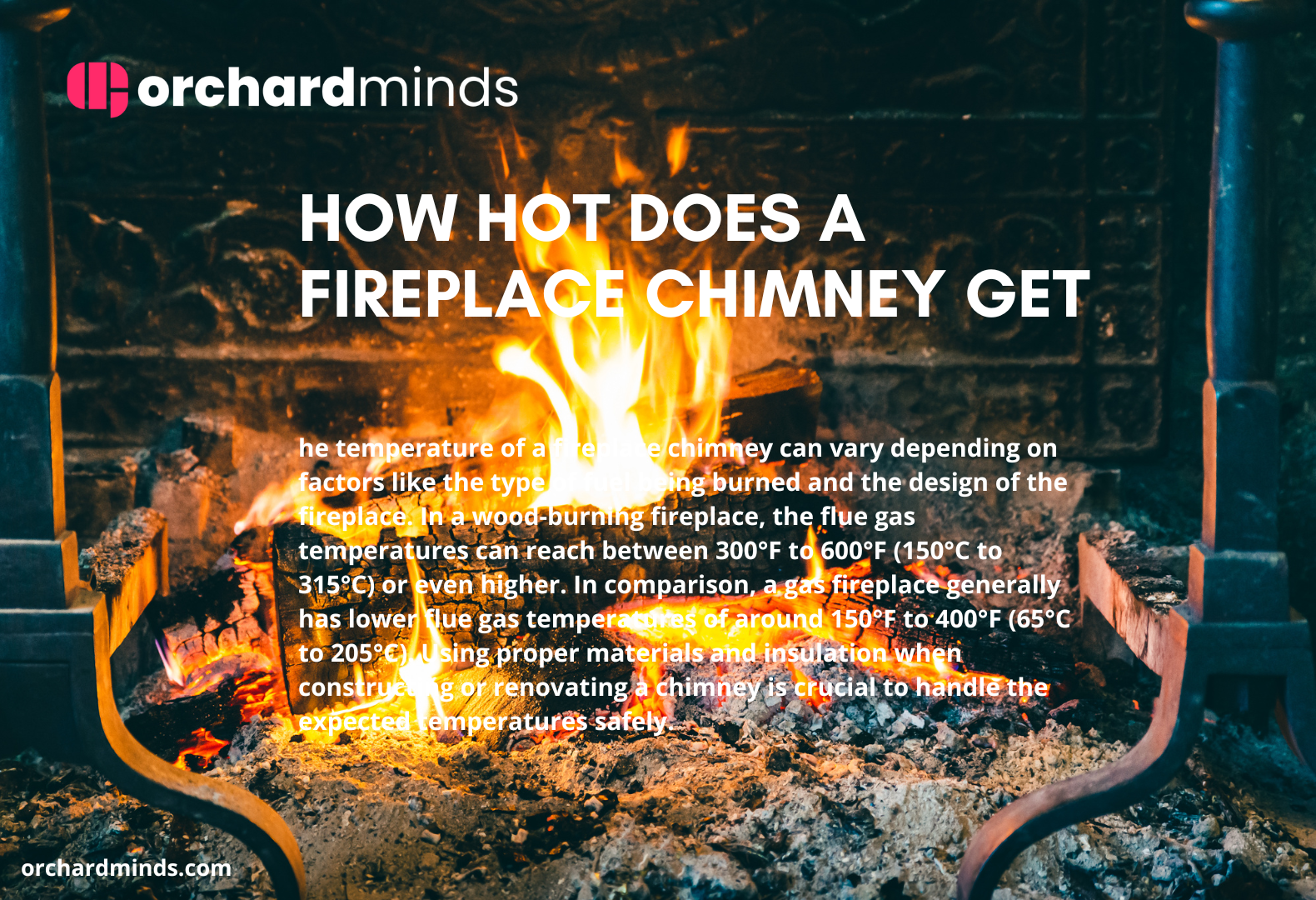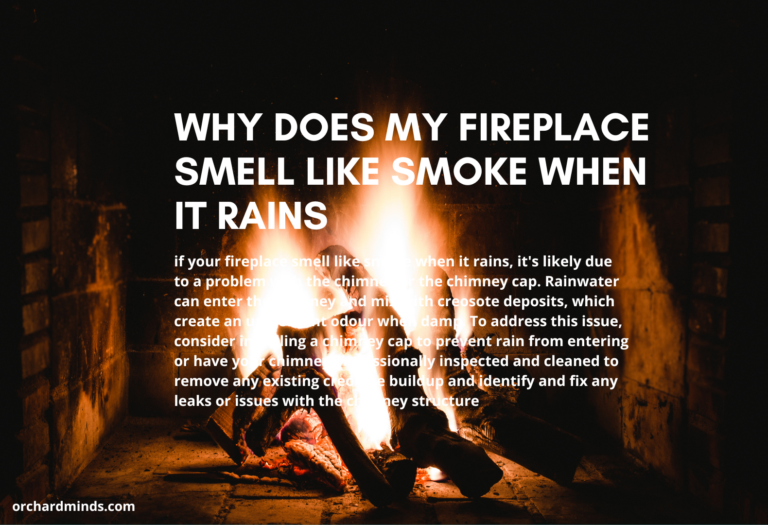Factors like fuel type and type of fireplace determine how hot the temperatures in the chimney, through the fireplace, will be. Temperature for the flue gases from a wood-burning fireplace usually ranges from 150 to 315°C, but even over. For gas fireplaces, the temperatures for flue gases are way much lower, from about 65 to 205°C.
It’s critically important to use appropriate materials and insulation when building or updating a chimney designed to handle the anticipated temperatures safely.
Fireplace Temperature by Type
This is in consideration that fireplace temperatures have a great disparity depending on the kind of fireplace and the fuel source that is burned. Now, here is the general temperature range for the different types of fireplaces:
Wood-Burning Fireplace: Traditional wood-burning fireplaces will dump some of the hottest temperatures. The actual temperature within the firebox can go over 2,000°F during the burn event, while the flue gas temperatures, at the chimney interface with the fireplace, typically range between 300°F to 600°F or greater. These high temperatures are one of the reasons proper construction and timely maintenance of chimneys are so important in preventing a chimney fire.
Gas Fireplace: Usually burning natural gas or propane, this sort typically gives very much lower temperatures than do wood-burning models. In a gas fireplace, internal firebox temperature typically varies from 1,000°F to 1,300°F (538°C to 704°C). Flue gas temperatures in a gas fireplace typically range 150°F to 400°F (65°C to 205°C). These cooler temps make gas fireplaces much more energy efficient and less of a creosote hazard to deposit within the chimney.
Electric fireplace : Electric fireplaces do have heating mechanisms, which give the perceived notion of flickering flames and warmth, but they do not realize the high temperature defined by wood or gas fireplaces. Electric fireplaces are only known to emanate relative cooler warmth, say in the order of around 120°F to 220°F (49°C to 104°C). This makes them safer in terms of direct contact with the fireplace in that there is no open flame or high-temperature combustion.
Pellet Stove: Pellets, compacted wood or biomass, are small and burned in pellet stoves. The temperature of the fire in a combustion chamber would typically be about 1,100°F to 1,200°F (593°C to 649°C). Pellet stoves flue gas temperatures are, like gas fireplaces, proportionately lower, at anywhere from 300°F to 600°F (150°C to 315°C). Since this, like an open fireplace, requires cleaning out of ashes, it should be maintained and cleaned carefully.
How Hot Does a Fireplace Surround Get
How hot a fireplace surround can get varies on too many factors to list. From the kind of fireplace and how it is fueled to the materials used to compose the surround itself, the surround generally is made with multiple non-combustible materials that serve to put a layer of defense between the fireplace and any surroundings. Here’s how hot they can really get under differing circumstances:
Wood-Burning Fireplace: When in use, a wood-burning fireplace will generate high temperatures in the surround. The focusing point of the zone around the firebox itself, typically composed of firebrick or other fire-resistive material, may reach temperatures ranging from 400°F to 1,000°F during active combustions.
But the temperature of the outer surround, usually made of non-combustible material like stone, brick, or tile, is a lot cooler—typically kept in the 100°F to 200°F range. Those temperatures are considerably lower than a firebox, of course, but are still warm to the touch, and require caution near the surround.
Gas Fireplace: Gas fireplaces are fueled by natural gas or propane and result in much lower temperatures than wood-burning fireplaces. Contained and more controlled in their combustion, a gas fireplace has a less hot surround. At the hottest, within the immediate area around a gas fireplace firebox might range from 200°F to 400°F. To the farthest away area from the gas fireplace firebox, referred to as the outer surround, it is cool, generally in the range of 80°F to 150°F. This makes gas fireplaces a safer option in terms of the temperature of the surround and, therefore, they often require fewer clearances to combustible materials due to lower heat output.
How Hot Is a Fireplace Fire?
The temperature of a typical fireplace fire can vary depending on the type of fuel, the combustion efficiency, and the stage of burning. In a wood-burning fireplace, temperatures in the active combustion area, near the logs and flames, can reach as high as 2,000°F (1,093°C) or more. However, the surrounding area, including the firebox and immediate surroundings, may be cooler. Gas fireplaces, which burn natural gas or propane, generally have lower flame temperatures, typically ranging from 1,000°F to 1,300°F (538°C to 704°C). These temperatures are why safety precautions and non-combustible materials are critical for the construction and maintenance of fireplace surroundings.
How Hot Does a Fireplace Chimney Get?
The temperature of a fireplace chimney can vary depending on the type of fireplace, the fuel used, and the efficiency of combustion. In a wood-burning fireplace, the temperature of the chimney can reach as high as 2,000°F (1,093°C) during active combustion when the fire is at its hottest. However, as the hot flue gases rise through the chimney and exit into the atmosphere, the temperature gradually decreases. In a gas fireplace, the chimney temperatures are lower compared to wood-burning fireplaces, with flue gas temperatures ranging from approximately 150°F to 400°F (65°C to 205°C). It’s essential to construct chimneys using materials that can withstand high temperatures safely, such as fire-resistant masonry or metal liners, and to maintain proper clearances to combustible materials to prevent potential fire hazards.
Does a Fireplace Really Warm a House?
Fireplaces can indeed provide warmth and ambiance to a home, but their effectiveness as a primary heating source can be limited. Traditional wood-burning fireplaces, while creating a cozy atmosphere, are often inefficient at heating a room because they draw more warm indoor air up the chimney than they radiate into the space. Some of the heat generated can be lost through the chimney, and they are not the most energy-efficient option. Gas fireplaces are generally more efficient since they produce controlled and consistent heat, but their ability to heat an entire house depends on the size and design of the unit and the insulation and layout of the home. Some advanced gas fireplaces can be used as supplemental heat sources. To maximize the heating efficiency of a fireplace, consider using a fireplace insert, which can transform an open fireplace into a more efficient heating appliance. Additionally, for whole-house heating, many homeowners opt for central heating systems or alternative options like pellet stoves or wood-burning stoves, which are designed with greater heating efficiency in mind.




Leave a Comment